If you eat gluten free, you’ve very likely wondered if you can dine out at — or order in from — restaurants again safely. Which restaurants are more likely to be safe and how to ensure the best experience possible are the real questions. For that, I have 8 top tips!
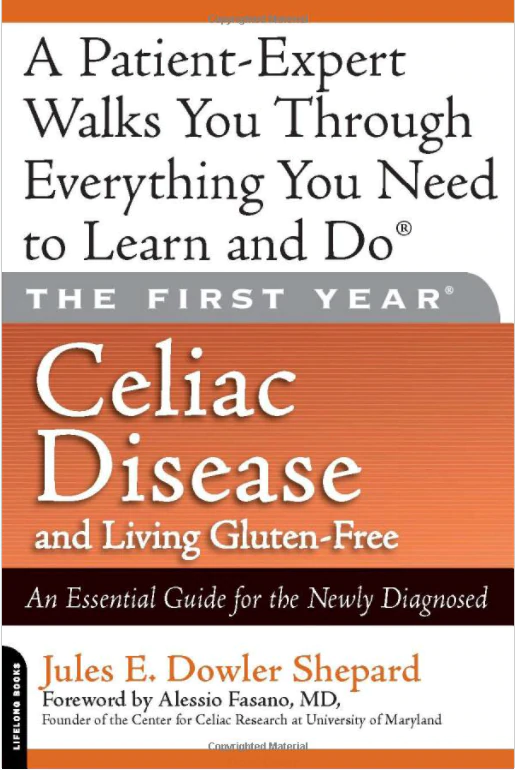 I’ve updated an excerpted portion of the chapter “Dining Out Again – Safely and Enjoyably,” from my book, The First Year: Celiac Disease and Living Gluten Free. If you have anything to add about your own experiences eating gluten free at restaurants, good or bad, please share in the comments!
I’ve updated an excerpted portion of the chapter “Dining Out Again – Safely and Enjoyably,” from my book, The First Year: Celiac Disease and Living Gluten Free. If you have anything to add about your own experiences eating gluten free at restaurants, good or bad, please share in the comments!
For more information on the differences between gluten-free menus, gluten-free menu offerings at places like gluten-free pizza chains, and truly gluten-free restaurant options, definitely check out my article on Safe Gluten Free Shopping & Eating Out.
When asked if I eat out from restaurants now that I have celiac disease, I answer “Yes, but …” only with the proper planning and in the right places. AND I have lots of advice on how to do so intelligently and safely:
Before you were diagnosed with celiac disease or gluten sensitivity, running out to grab a quick bite to eat where someone else had to do the cooking and cleaning up was a luxury you may not have fully appreciated. Now that you have some idea of the hazards of eating gluten, you may feel too frightened to leave the confines of your own (now) gluten-free kitchen.
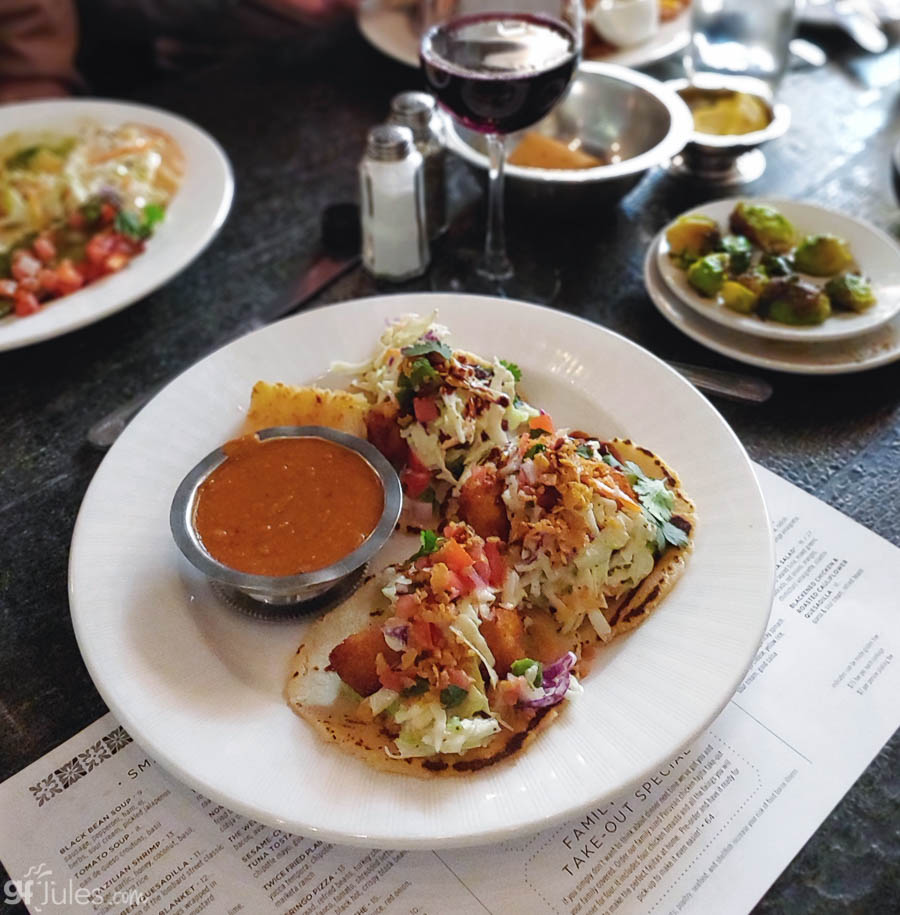
A study of Canadians living with celiac disease reported that more than half of the families with celiac members reported that they avoided restaurants all or most of the time, despite the fact that four out of five people generally report that going out to eat at a restaurant is a better way to use their leisure time than cooking and cleaning up!

But living gluten free is not about living in a bubble, so I urge you to put your fears on the shelf of your gluten-free flour cupboard and close the door!
Since most celiacs surveyed (and really, who doesn’t agree with this statement at least once in awhile?) have indicated that their quality of life would be improved if there were more gluten-free choices at restaurants, it is imperative that you learn how to successfully navigate the restaurant world as a gluten-free’er wanting to live a better life.
There is a way to safely go back out again and socialize, entertain, “do business lunches”, go on dinner dates, and grab a meal at a local joint — even socially distanced or take-out. You just have to know how to do it!
Before you run back out to McDonald’s, though, a few important pointers are useful.
Top 8 Tips for Eating Out Safely Gluten Free:
1. Try to eat early or late
… so that you avoid the rush hours when the managers and chefs have the least time to pay special attention to your meal. And you should note that I’m urging you to find the manager or chef to help you with your order so that you can be sure it’s attended to properly!
Also, wherever possible, patronize restaurants that make their food from scratch.
I know it’s not always easy to do, and I know that those restaurants are likely to be more expensive, but they will have a much better grip on what their ingredients are. Besides, aren’t you worth it? Your health certainly is!
2. Understand the limitations of larger restaurants and fast-food chains.
They work with pre-made sauces and ingredients, have line cooks preparing different parts of the same meal, usually have unseasoned staff (pun intended) and cross-contact is often hard to avoid. Restaurants which make their own bread or use flour in recipes (pizza, battered & fried food, bakery items, etc.) are also less likely to be able to ensure your dish is free from gluten.
As a rule, it’s wise to avoid most fast food, as there’s just too much going on in a small environment to ensure your food stays safe, but there are always exceptions. Chick-fil-A, for example, offers grilled nuggets and fries prepared in a dedicated fryer (always double check at each outlet though, and alert them to your dietary restriction).
No matter what the size of the restaurant, be sure to patronize restaurants doing a good job whenever possible to encourage them to continue gluten-free offerings and to relieve your own mind about your meal.

3. When possible, call ahead during less busy times
… and ask questions about the menu and alert the chef of your needs. When you arrive at the restaurant, use these printable “restaurant cards” to minimize misunderstandings between you and the kitchen.
Waiters love these cards because they don’t have to write all of your ingredient restrictions down and they are absolved of responsibility when they can hand the cards to the kitchen. The kitchen staff appreciates the cards because they are not left in the dark as to the parameters of your food restrictions. And you’ll love the cards because they make your life a lot easier and safer.
As long as there is good communication between you and the kitchen, you should feel more comfortable with your entire dining experience. Also be sure to tip your server well – it never hurts to reward and incentivize servers for your next visit!
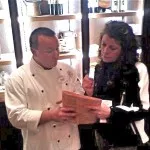
4. Establish a relationship with the manager or owner of local restaurants
… you particularly enjoy. Maybe it’s the neighborhood Mexican restaurant or a take-out Thai place you have always loved, or even a chain restaurant that is close to work and your colleagues love to frequent.
Introduce yourself sometime and educate the proprietor about your food restrictions in the kindest possible way. Offer to go over the menu items with him or her (during off-peak hours!) and to identify what is already gluten-free so that they can let other patrons know about safe choices.
Ask if you could make arrangements to bring your own gluten-free pasta and have the chef boil it for you in a separate pot, but serve his or her recommended (gluten-free) sauces.
Volunteer to let the local celiac support group know of this restaurant’s cooperation and drum up support for the establishment. Get creative and by all means, be nice! You may even be surprised at how eager they are to please you when you become a regular and are greeted at the door like Norm in “Cheers.”
5. Get to know the fryer and BYOC (Bring Your Own Chips).
It is easy to believe that the fries are gluten-free because potatoes are on your safe list. However, restaurants often have only one fryer, and once your French fries have been deep fried in the oil they also used to fry the chicken nuggets, well, I hate to break it to you, but your fries are no longer gluten-free.
FACT: In a shared fryer, bits of wheat batter will break off and find their way onto your gluten-free fries or chips, as gluten-free blogger Johnna found recently. But even if you don’t actually see it, cross-contact can still do damage to someone with celiac disease or cause problems for someone with gluten sensitivity.

A study done by Gluten Free Watchdog in 2020 found cross contact with gluten when gluten-free foods were cooked in shared fryers with wheat. Also, if they recycle their oil, even a dedicated fryer may not protect you from cross-contact.
Furthermore, even if their fryer is not cross-contaminated from other food items, the French fries may themselves not be gluten-free! McDonald’s famous French fries are a perfect example. Their website has from time to time indicated that their fries are free from wheat and gluten; however, numerous lawsuits have alleged that the food allergy listing on the site is incorrect and misleading.
 Due to these lawsuits, the website (page 18) was updated to indicate that the vegetable oil in which the fries are cooked actually contains beef flavor derived from wheat and milk (along with 17 other ingredients … to make a french fry?! No thank you!).
Due to these lawsuits, the website (page 18) was updated to indicate that the vegetable oil in which the fries are cooked actually contains beef flavor derived from wheat and milk (along with 17 other ingredients … to make a french fry?! No thank you!).
Current (2022) ingredient list for McDonald’s fries themselves (and no, it’s apparently not just potatoes):
French Fries: Potatoes, Vegetable Oil (canola Oil, Corn Oil, Soybean Oil, Hydrogenated Soybean Oil, Natural Beef Flavor [wheat And Milk Derivatives]*), Dextrose, Sodium Acid Pyrophosphate (maintain Color), Salt. *natural Beef Flavor Contains Hydrolyzed Wheat And Hydrolyzed Milk As Starting Ingredients.
Contains: Wheat, Milk.
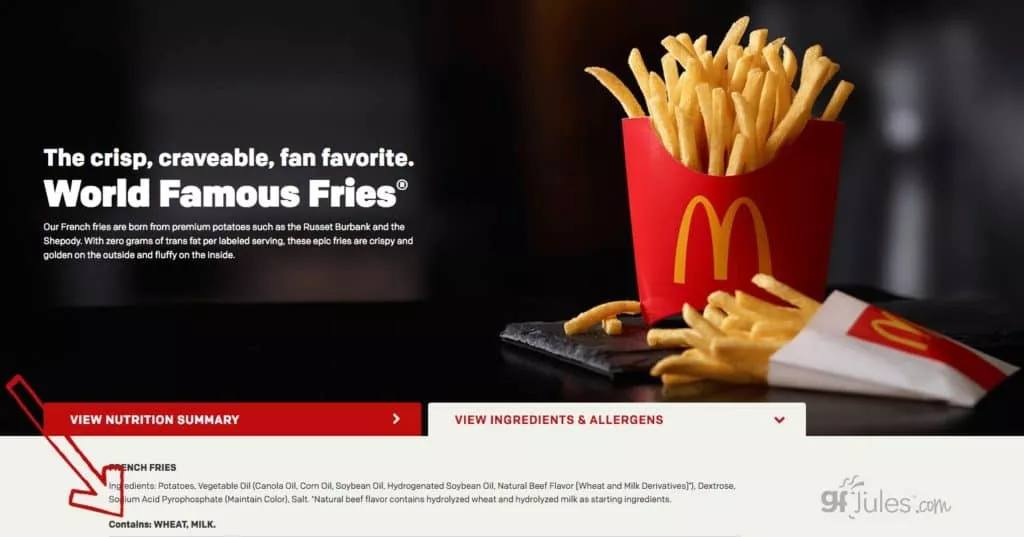
Thus, seemingly gluten-free items (potatoes + vegetable oil) may still contain gluten—it never hurts to check.
By the way, there are restaurants like Chick-fil-A which do typically use a dedicated GF fryer for their french fries, but always ask before ordering at each store!

Tortilla chips are another big no-no if they are made in a fryer that also fries flour products or breaded items. If you’re unsure, bring your own! I usually bring my own gluten-free crackers or chips to any Mexican restaurant, just to be on the safe side. BYOC (Bring Your Own Chips!!!!!)
If others at the table are dipping the restaurant chips into the salsa or guacamole, ask for a separate bowl so you can be certain there’s no cross-contact. In fact, I often bring my own (fill in the blank) food when I must eat at a restaurant where, for one reason or another, I do not feel safe eating their food.
I want to be social, but not at the expense of my health. (This is a great thing to do for social distancing anyway, so ….)
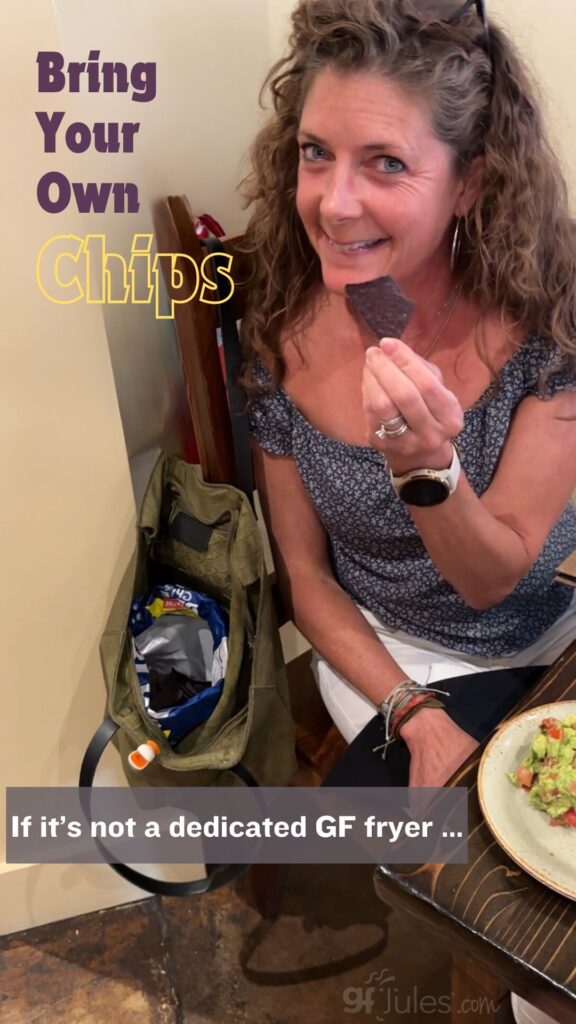
I’ve never run into issues with bringing in food myself, but if you do, that’s certainly an establishment that does not deserve your business, or the business of those with whom you are dining. When I consult with restaurateurs who wonder if they should care about patrons who have dietary restrictions like gluten, I always remind them that very few people dine alone.
In other words, one gluten-free diner might not seem like a big deal, but their party from the office or the rest of their family or the girls’ night out crew IS a big deal; if the gluten-free person can’t eat there, no one else in their party will either.
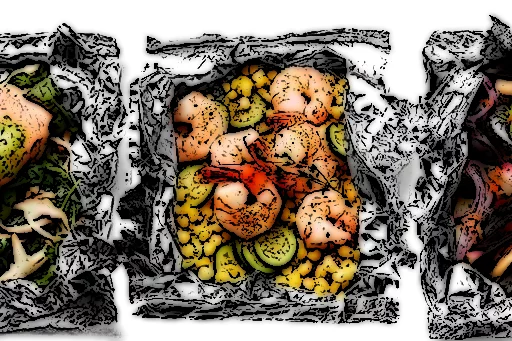
6. While you’re at it, ask that your food be prepared on aluminum foil.
Whether you order a grilled steak or a sautéed fish, ask that the chef place foil under your food. This request does three things in addition to actually protecting against cross-contact.
First, it brings attention to the fact that gluten-containing food may have been on that grill first. Second, it causes the cook to actually stop to consider whether he or she is using a clean pan to flash fry your fillet. Third, it ensures that the kitchen will take your food restriction much more seriously.

7. Avoid cafeterias, salad bars and buffets.
Not that I harbor any childhood resentment from being forced to eat lime Jell-o, succotash, corn pudding, fried catfish and a yeast roll (all on the same plate), but you get my point. It doesn’t matter here if the kitchen can somehow avoid cross-contact, the line probably can’t.
The same serving spoon that was in that corn pudding will likely find its way into your steamed vegetables at some point. It’s a sad truth, but no less truthful. By the same token, salad bars which have any gluten on them (think croutons, fake crab meat, and the like) are also risky, since patrons help themselves and often transfer spoons or drip one food onto another.

8. Thank all those at the restaurant who were helpful and attentive, and be sure to leave a generous tip.
This gratitude will come back in spades, at this and other restaurants, for you and for other diners with food restrictions.
. . . .
Bottom line: you don’t necessarily have to give up on dining out— you can work with restaurant personnel before and during meals, and you may even enjoy safe fast food experiences when you know what to look for and consciously avoid cross-contact.
If you do not feel safe eating the food prepared at a restaurant, however, do not take a chance. Your health is too important!
I always have a gluten free protein bar or a bag of nuts in my purse for just such an occasion. Be prepared, be cautious and be real. Even if you can’t eat at a restaurant, you could still go and enjoy a drink or the foods you brought in yourself.
 Excerpted and updated from my second book,
Excerpted and updated from my second book,
The First Year: Celiac Disease and Living Gluten Free (Da Capo Press, 2008).
Did you like these tips? Pin them to refer back to later!
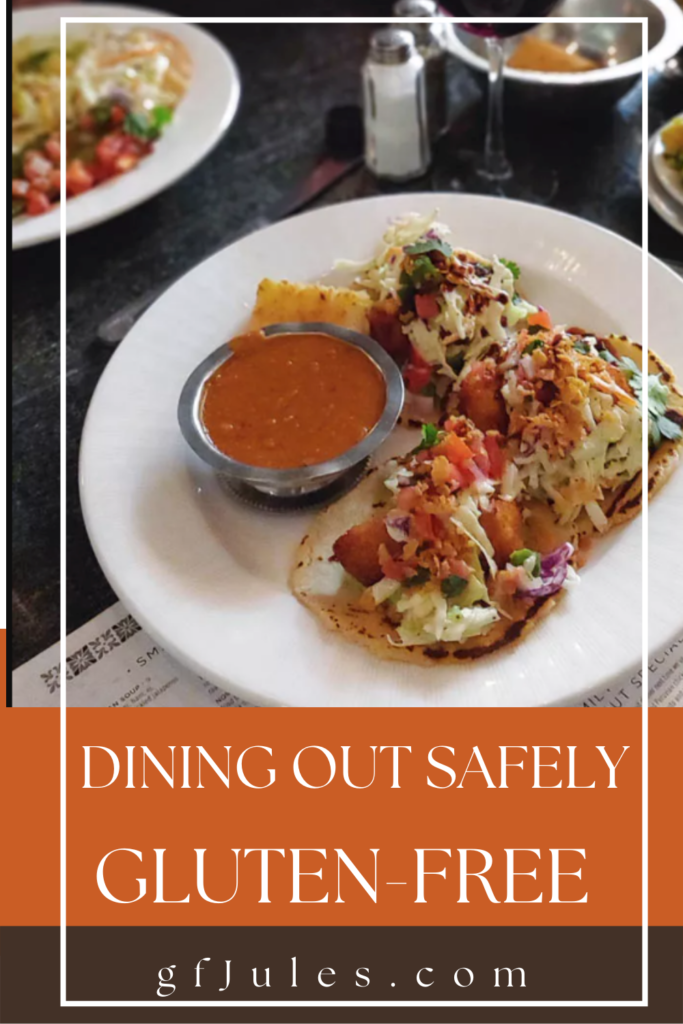
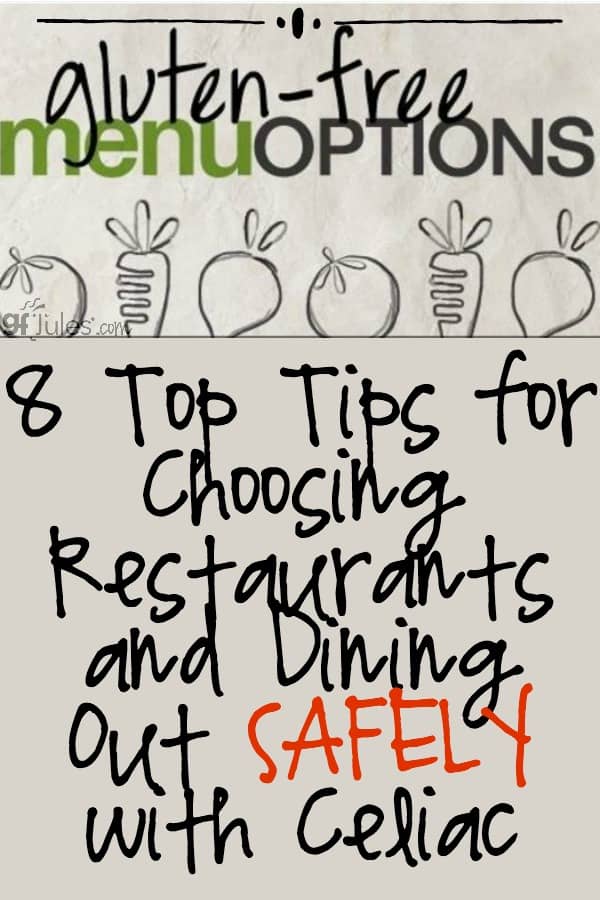



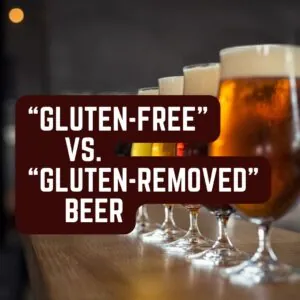




 (3 votes, average: 4.33 out of 5)
(3 votes, average: 4.33 out of 5)











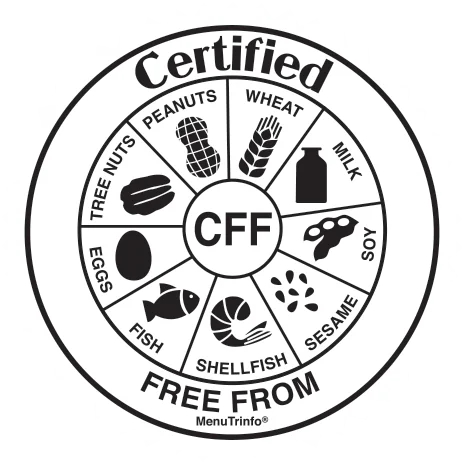
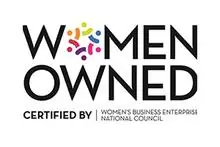

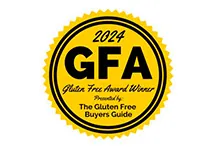
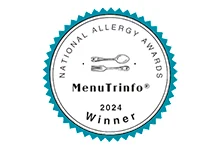
When I am eating out, I always ask to talk to the kitchen staff. Then I explain my issue with gluten and ask them what the safest/easiest thing for me to order is, and then I follow their suggestion. I once was eating out at a rather fancy Italian place, which advertised gluten free pasta (and it came in a different shape so you knew you were getting the right pasta), but then when it was served, it had a few strands of regular spaghetti mixed in. So I knew there had been cross contamination- they had obviously used the same utensil to serve the GF pasta!
Oh dear, Jodi! They may have even used the same pasta pot of water – that happens way more than it should (which is never!). I like your idea of asking the staff what they recommend ordering – they should know best! Thanks for sharing your tip!
~jules
Thank you for this excellent post! I commented on your Twitter feed that I learned most of this the hard way. When I was first diagnosed in 2009, my husband and I went to a favorite restaurant and I somewhat timidly asked the server about menu options. She said something about potatoes. And I said, “Potatoes are generally gluten-free–just depends on how they’re prepared” And she said, “Well, how should I know? It’s YOUR allergy!” My sword fish that night had some sort of lightly battered onion on top, which I picked off, but I still got sick (I had only been diagnosed about two weeks earlier, so I was still healing and probably had NO business trying to eat out). My POINT though, is fast-forward to now and that rude waitress works somewhere else (we ran into her again and she was SO nice) and our beloved restaurant provides clear-cut gluten-free options. Eating out is still a risk (Although we have some dedicated GF restaurants around here). I am lucky enough to live in Portland, where food is practically a religion, or least a spiritual calling. Once when going to dinner for our anniversary, my husband called ahead to make reservations and after telling them that I had Celiac, they went out of their way to get gluten-free bread for the French onion soup. There have been missteps–oh my yes. My steak salad infested with croutons (such a beautiful salad too; I gave it to a coworker). My birthday treats at work–the baker of which says to me, ” I *think* those are gluten-free” so, of course I didn’t touch them. I don’t expect anyone to remember that I’m gluten-free–it IS my issue. But, that doesn’t stop me from educating people who want to be educated–I feel a responsibility to let people know how serious Celiac is.
Thanks so much for sharing your experiences, Bethany! It’s a world different from just a few years ago, and when you’re first diagnosed, nearly impossible to get everything right. Eating at home is so much safer, more economical and tastier (in many cases!), but that doesn’t mean we don’t want to eat out once in awhile, just like anyone else. Thank you for educating others along the way! Take care,
~jules
Make sure to check that ingredient list for hidden ingredients in the most unsuspecting of dishes.
Thank you for the great post! Someone just asked me for gluten free help and I referred her to your website!!! Thank you for your dedication to keep moving forward and helping others.
Thank YOU, Caroline! I’m happy to share information wherever I can to help others living gluten free. It’s nice to hear that it’s helpful and I really appreciate you referring others to my site!
~jules
Jules suggested I post a note about my recent experience being glutened last Thursday.
I got glutened at a restaurant across the street from my office. This restaurant is usually really good about allergy issues.
I got sick even before I left the restaurant.
Even though I repeatedly told the cashier who took my order that I was ordering “no bun” because of an allergy, she didn’t tell the cooks and she didn’t note it on the order because she was new and couldn’t find the allergy button. Instead of asking for help, she just ignored it. She didn’t even verbally communicate it, as they usually do.
I should have guessed something was wrong when the order came so quickly. My order usually takes more time because they construct it in a separate clean area.
Fortunately the restaurant keeps a clean kitchen. At most I only got a bit of cross contamination from their gloves and the preparation area that wasn’t cleaned before they made my burger.
It’s such a shame though. They have always been so amazingly good about inquiring about a “food allergy” before I could tell them when I order “no bun”.
But all you need is one untrained wait staff.
It’s exactly the same thing that happened at another local restaurant last year. Over and over I told the waitress about ordering from the Celiac Menu and then she neglected to note it to the cook, who made the “regular” baked cod.
I just don’t know what to do. If I could find a restaurant that only served GF food, I’d give them all my business!
I was dismayed to learn on a recent commercial that Denny’s omelets were “so fluffy” because they put pancake batter (gluten) in with the eggs. I am sure most GF folks would not guess that gluten would be in a simple omelet.
Please pass this information on…
Tina – that is something that really shocks most of us. I posted again on FB about that recently and hardly anyone had heard of that possibility. I always caution folks to question eggs on a buffet line for the same reason, as well. Thanks for your comment!
I-hop puts pancake batter in them too, fluffs thsm right up,i ended up having just coffee the LAST time they didnt seem to be tpo worried about whether or not it coyld make me truly sick.
If you ask and they give you the whats that answer Run
Yes Janet, that’s often the case on buffets and pancake restaurants. Why can’t they just make eggs with eggs?? Sheesh. Dangerous stuff!
~jules
Nice post. Double and triple checking that the restaurant you are eating out at is aware of celiac and cross contamination is so important. There have been times when I’ve asked all the right questions but an error has been made and they have brought me the non gluten free version of my meal by mistake. :/ This could of course be a disaster but as I always triple check as they put my meal down that it’s gluten free, I’ve been ok. Don’t be shy…ask, ask, ask and keep yourself safe!
Unfortunately, even a normally good restaurant chain that is usually attentive and you are treated well can result in a bad experience with an inexperienced waitress. This past weekend I had a blatant mistake made on my salad at Outback where someone put tiny, thin chinese noodles on my salad that I did not notice at first. I thought the crunch was the carrots on top. When I asked the waitress if they were chinese noodles, she tried to tell me the manager said they are gluten free and got extremely flustered even though I was very polite. If you make a mistake be honest and apologize as a waitress. She argued with me, and I finally had to tell her if there was a chinese noodle on the market that was gluten free I would know about it, because I miss them! Finally the manager came over and apologized and said they were not g/f, and tried to fix the problem. All the free future dinners in the world don’t make up for an entire week of illness and a ruined Valentine’s Day dinner for me though. I guess my point here is, even if it is a normally accommodating restaurant, avoid an inexperienced waitress. Asking for that accommodation is worth it so that you can stay well.
Kim – I agree with you completely. I’m so sorry that you had that happen on you V-day! We’ve all had a similar experience and I SO feel your pain. I usually ask for the manager at EVERY restaurant. I think the new issue will become so many restaurants having “Gluten-Free” menus that customers become complacent, thinking that the restaurant knows what it’s doing. You still must always ask and be clear about the importance of keeping your food safe. Feel better!!!!
Hi Jules,
It should be noted that in the case of McDonald’s French Fries and Hash Browns it is not the fry oil that is the issue but the oil used to make the fries and hash browns prior to frying. McDonald’s frying oil as currently formulated is okay but that isn’t to say that cross-contamination wouldn’t be a problem even if the product, prior to frying, was okay.
Thanks for keeping us informed.
Thanks Deborah!
From a Jules Customer:
Jules,
Love and appreciate your work.
Here is why a lot of supposed gluten free French fries are contaminated with wheat. The restaurant may have a dedicated fryer but they use the same filters in recycling the cooking oil for all their fryers. I learned this from a Wendy’s manager’
Thanks for all you do,
Ron
Jimmy Johns is another good option, but you need to ask them to fix you un-wich on a clean surface and use clean knives, take from the bottom of the stacks of meat/cheese, etc.
For anyplace that offers tossed salads, also make sure you tell them it needs to be mixed in a clean bowl, or to just pile the ingredients and you’ll toss yourself.
Thankfully in Chicago we’ve got a lot of taco places, which are usually pretty safe from cross-contamination (watch out for places that do tortas and grill bread on the same surface they heat corn tortillas). Corn tostadas are usually a safe choice because they are usually fried offsite at the place where their tortillas are made (and only corn tortillas are fried). Avoid rice, it might use a mix that contains wheat.
Most important – be patient, and be appreciative. I am more than willing to wait for my food to be prepared to the standards I need, even if I need to send something back, as long as it is done right. And for places like my local Five Guys where they all change gloves when handling my burger, it never hurts to throw a buck or two into the tip jar.
Great tips, Victoria! Thanks for sharing your Chi-town experiences, too!
I was spoiled in Maui; almost all the restaurants were more than accommodating, most even had their own gluten free menu. The Hyatt Resort’s restaurants would cross check with the chef and help me find a food that would be gluten free and easy for the kitchen to work around making. The best experience was definitely at Son’z on the resort for dinner. So if anyone is headed to Maui, try staying at the Hyatt or at least dining there!
To add on what I previously wrote, the restaurants I visited in Ka’anapali and Lahaina, were:
-Kimo’s (Lahaina)
-Bubba Gump Shrimp Co. (Lahaina)
-Umalu (Hyatt Resort, Ka’anapali)
-Son’z (Hyatt Resort, Ka’anapali)
-The Melting Pot (Lahaina)
-Outback Steakhouse (Lahaina)
I believe because the part of Maui I was in was mostly touristy, that a lot of the restaurants are familiar with common food allergies and thus are able to accommodate.
Hi Jules!
I wrote you back with a f/u question on your last blog post ( july 13 post) , but I don’t know if you got it now that you’ve moved onto this entry…
Do you think you could pretty please :)share your wonderful baking knowledge with me and offer your advice on the last question(s) I had posted in response back there?
Thank you so much!
Alli
Eating out can feel so stressful! Especially as the last few times I’ve eaten out, I’ve had mild symptoms after. I don’t know if things are different in the US, and whether restaurant staff are more aware of celiacs or not.
Thanks for the article. One thing that I had never thought to do was ask for my food to be prepared on foil. That’s a great tip.
great list, Jules!
Thanks Cheryl! Hope it’s helpful to folks – you can also refer your clients to the free restaurant cook cards they can download from here – translated into several languages, they’re pretty handy!
My family has found Chipolte to be a wonderful place to dine gluten-free. They will put on a fresh set of gloves before handling our order and pull out a fresh container of cheese, salsa, etc., before placing it in our meal. They also use a fresh spoon when dipping into the new container. Also, Cheeseburger in Paradise, in SE Michigan, has a wonderful gluten-free menu.
I’ve had pretty good results ordering from gluten free menus and using common sense about what to order.
Fast food is a challenge. I’ve gotten glutened from hash rounds from more than one fast food place so it’s probably from cross contamination using the same oil to fry breaded stuff.
If in doubt, I order a fresh salad.
I won’t stop eating out because of my gluten intolerance.
I commented earlier on another thread about a new (supposedly) gluten free pizza place. After a discussion back and forth, Jules started this new thread and asked me to re-post my comments here. So here goes: And while I’m at the cashier paying for my order, it’s common for the prep person at the other end of the room to holler ‘Hi Brenda!’ or ‘Gluten Free Lady is in the house!’ when they see the words ‘Gluten free. Fresh Gloves’ come up on their monitor.
And while I’m at the cashier paying for my order, it’s common for the prep person at the other end of the room to holler ‘Hi Brenda!’ or ‘Gluten Free Lady is in the house!’ when they see the words ‘Gluten free. Fresh Gloves’ come up on their monitor.
Jules, your advice that we should all strive to ‘make nicey’ and educate the staff at a local restaurant about how to fix our food without cross contamination was right on the money. I go to my local Panera Bread (it’s ironic I dine at a bakery, isn’t it?) at least a couple of times per week. I eat the Fuji Apple w/ Chicken salad in the winter (I’m also dairy free so I leave off the gorgonzola) and the Strawberry Poppyseed Chicken Salad in the summer. When ordering I ask that they put on fresh gloves and that only one person handle my order. I added that last part because sometimes one person would prepare my salad and then pass it on to someone else (as they usually do) to put the bowl on a platter and add my silverware and napkins. The problem is, that person usually just got through tearing a baguette off a loaf of French bread for someone else’s order. So I do not hesitate to speak up and say ‘WAIT!’ and stop them from passing my food on to the other person. This is one reason I like to dine where I can watch them make my food. Most of all, it’s all about being extra nice when explaining WHY you need them to do (or not do) something. And remember to say thank you, thank you, thank you when they do it right!
Now, when I go to Panera, I am so proud when I see one of the staff training another person about how to prepare my meal. At this point, almost everyone that works there knows my order and my ‘rules.’ One day a girl started to pass my salad to someone else (as they do with ‘regular’ orders) and the person they tried to pass it to held their hands up in the air and shook their head saying ‘I can’t touch that food with these gloves.’ I LOVED IT! When I walk in there I feel like Norm on the old Cheers tv show. ha The cashier will start to rattle off my Fuji Apple order before I even get to the counter. (It really threw some of them when I switched to the Strawberry Poppyseed this summer.
These are almost all young people, and I love them for the care they take. But I know it is ultimately up to ME to make sure things don’t go wrong. So I try not to go there during peak times, because A) I don’t want to complicate their lives during the hard part of their day, and B) because I know when people are in a hurry they can easily lose focus and inadvertently revert to their every day routines instead of following my special rules. Also, during off-peak times I feel more comfortable taking time to explain to them about celiac and why I have to be SO careful. I tell them this is not like someone having a food allergy that is going to make them feel crummy the rest of the day if they accidentally get some cheese in their salad. I tell them if you have celiac disease, gluten actually destroys part of your digestive tract, and that can lead to all kinds of other illnesses. I tell them even one crumb can set off a reaction in my body, and that’s why I have to be so particular. I know they understand, because I hear them relay what I’ve said to others.
Now, having just said how wonderful they are at my Panera, would I feel that I could recommend ANY Panera? Not necessarily. They don’t have a gluten free menu to look at, even online. I had to do research in a notebook they have under the counter to find what I could eat. So they are not, in general, geared for GF eating. But my point is that I TRAINED THEM TO BE. Even though I’m just eating veggies in salad form, I know there is still plenty of room for cross contamination. Although they bake bread there, they do not prepare it on site. So it’s not like there is a mixer in the back room blowing flour all over the place. But there is the issue of the sandwiches being made in proximity to the salads, and they are constantly tearing baguettes off the French loaf, and I stand there praying the crumbs aren’t flying far enough through the air to reach my salad. But you know, all you can do is all you can do. I NEED to be able to go out to eat once in a while. And if I have to go to the same place and eat the same thing over and over because that’s the place I feel the most comfortable since I’ve trained the staff and I can watch them prepare my food…then I guess that’s what I’ll do.
(P.S I would just like to add that prior to reading Jules post above, I had not (yet) read her book. So it was pure coincidence that we both used the analogy of feeling like Norm on Cheers.